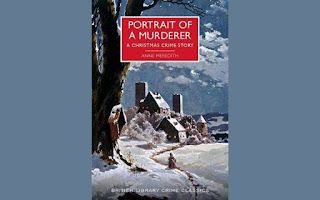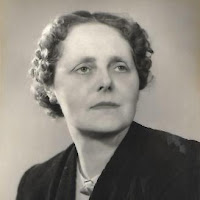by Anne Meredith
This is a book that turns the conventions of mysteries upside down.
In the first paragraph, the author tells you that Adrian Gray was murdered by one of his six children in an “instantaneous and unpremeditated” act of violence in the early morning hours of Christmas Day 1931.
By page 61 of the British Library Crime Classics edition, the author even tells you that Gray’s son Hildebrand (called “Brand” by his family and friends) committed the murder.
This is a rare inverted mystery. Instead of being a “whodunnit,” it’s a “howcatchem.”
Author Anne Meredith has created a literary mystery dense with rich characterization. Adrian Gray is a harsh, hypocritical man for whom few tears are shed when he is gone. Any of his children would have been tempted to kill him: Amy (“shrewd and shrewish) was his unpaid housekeeper; Olivia is married to unscrupulous financier Eustace Moore who has virtually bankrupted Gray with bad investments; and Isobel, married to an abusive man, is grieving the death of her infant daughter with no sympathy from her father. Only Ruth, married to an unambitious attorney her family looks down on, is happy with her life.
Then there is Brand: “a difficult, striking, handsome figure, sullen and secretive, capable of sudden expansion when he blossomed as unexpectedly and beautifully as a miracle or a flower, but among his own people dark, silent and morose.” Artistically inclined, he often begged money from his father. A youthful escape to Paris to study art resulted in his marriage to a slatternly woman with “a trail of drab, unattractive children” of questionable paternity.
With Brand, Meredith achieves the nearly impossible: she creates a murderer who raises your sympathies yet still shows the narcissism and rationalizations that enable such a person to kill and direct the blame elsewhere.
The person Brand sets up is his brother-in-law, Eustace Moore. In multiple places, Eustace Moore is described as a Jew and is clearly looked down on by his anti-Semitic in-laws. He makes the perfect scapegoat, especially when word hits the newspapers that his investments are failing, washing the way the fortunes of many desperate, small investors who trusted him. He is already guilty of fraud at the least.
Seeing how Brand nearly — but not quite — gets away with murder is every bit as fascinating as reading other mysteries to see “whodunnit.” Meredith’s gift for creating complex characters who evolve as they deal with the circumstances around them means that this story ends with an unexpected tragic redemption.
If inverted mysteries appeal to you, you might want to check out Frederick Knott’s Dial M For Murder, which was made into a movie of the same name by director Alfred Hitchcock; Frances Iles’ Malice Aforethought or Freeman Wills Crofts’s The 12:30 from Croydon.
The Author: Anne Meredith (1899 – 1973)
Anne Meredith was the pen name of Lucy Beatrice Malleson.
She is perhaps best known for her Arthur Crook series, which she wrote under the pseudonym Anthony Gilbert. Of the 69 crime novels she published, 51 of them featured Arthur Crook, a vulgar London lawyer completely unlike the suave, aristocratic fictional detectives of the time such author Dorothy Sayers’ Lord Peter Wimsey.
Two of her books were adapted as movies: The Vanishing Corpse as “They Met in the Dark” (1943) and The Woman in Red as “My Name is Julia Ross” (1945). Her short story “The Goldfish Button” was adapted as “You’ll Be the Death of Me,” for an October 1963 episode of The Alfred Hitchcock Hour.
She was a cousin of actor-screenwriter Miles Malleson.




